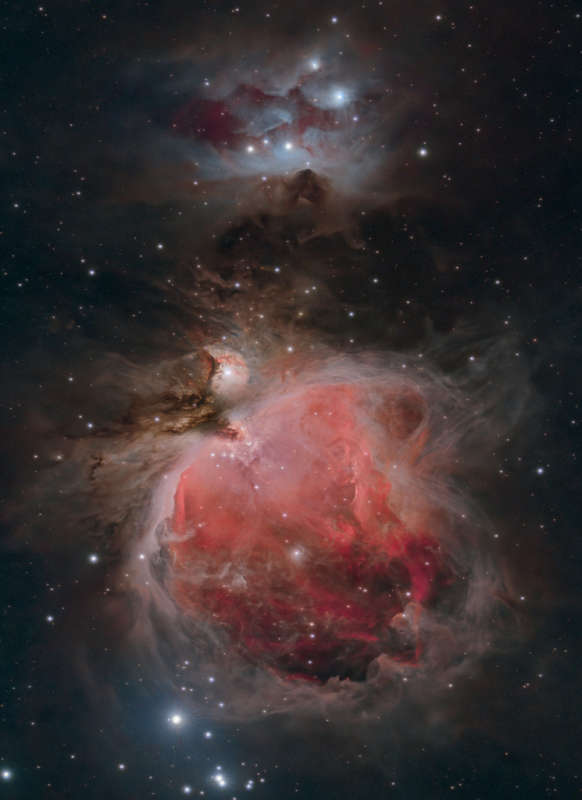Credit & Copyright: Abraham Jones
Explanation:
Few cosmic vistas excite the imagination like
The Great Nebula in Orion.
Visible as a faint celestial smudge
to the naked-eye,
the nearest large star-forming region sprawls across
this sharp telescopic image,
recorded on a cold January night in dark skies
from West Virginia, planet Earth.
Also known as
M42,
the Orion Nebula's glowing gas surrounds
hot,
young stars.
About 40 light-years across, it lies at the edge of an immense interstellar
molecular cloud
only 1,500 light-years away
within the same spiral arm of our Milky Way galaxy as the Sun.
Along with dusty bluish reflection nebula
NGC 1977 and friends
near the top of the frame,
the eye-catching nebulae represent only a
small fraction of our
galactic neighborhood's
wealth of star-forming material.
Within the well-studied stellar nursery,
astronomers have also identified
what appear to be numerous
infant solar systems.
1999 2000 2001 2002 2003 2004 2005 2006 2007 2008 2009 2010 2011 2012 2013 2014 2015 2016 2017 2018 2019 2020 2021 2022 2023 2024 2025 |
Yanvar' Fevral' Mart Aprel' Mai Iyun' Iyul' Avgust Sentyabr' Oktyabr' Noyabr' Dekabr' |
NASA Web Site Statements, Warnings, and Disclaimers
NASA Official: Jay Norris. Specific rights apply.
A service of: LHEA at NASA / GSFC
& Michigan Tech. U.
|
Publikacii s klyuchevymi slovami:
M 42 - Orion Nebula - Tumannost' Oriona
Publikacii so slovami: M 42 - Orion Nebula - Tumannost' Oriona | |
Sm. takzhe:
Vse publikacii na tu zhe temu >> | |
